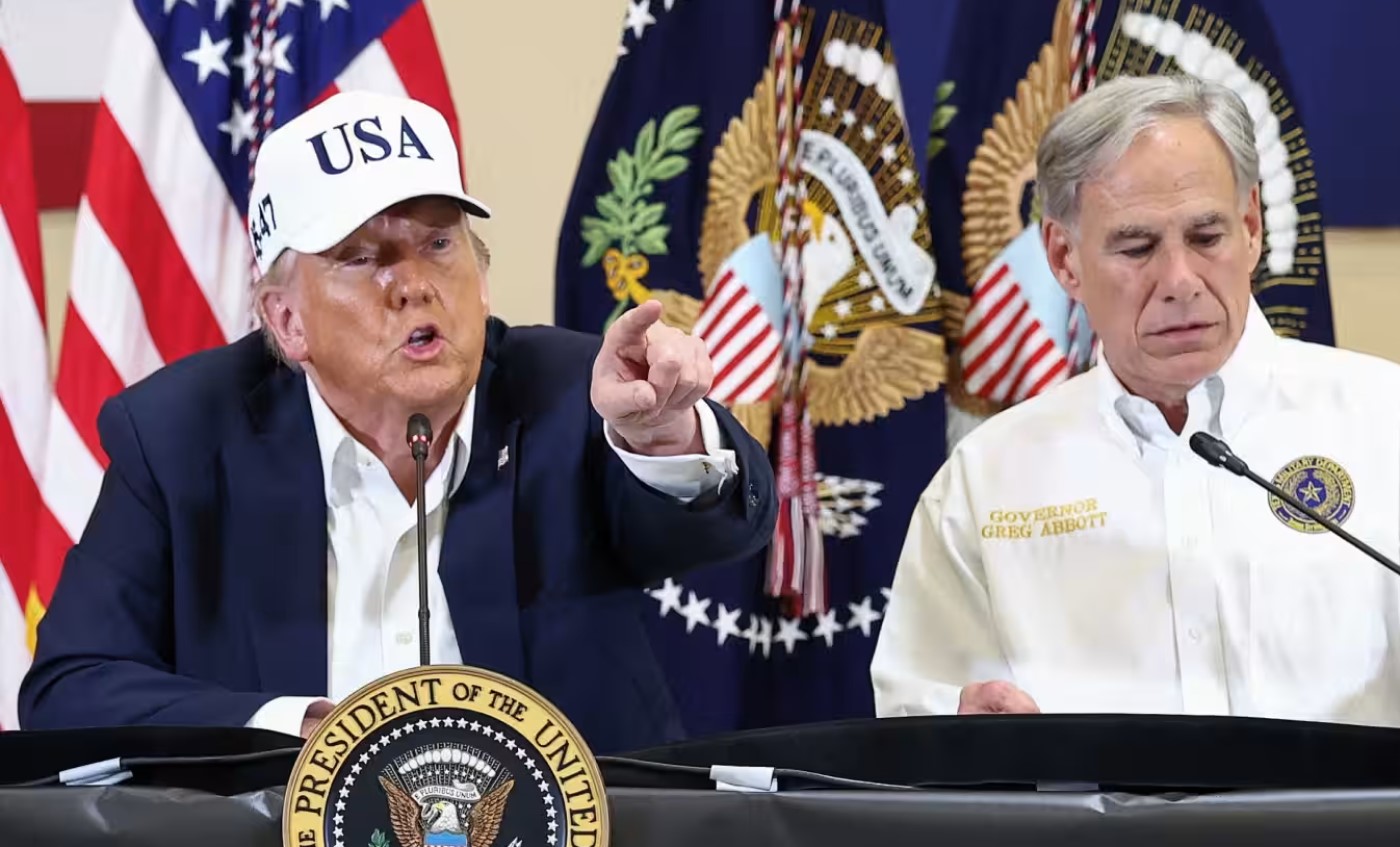Presidential Response to Texas Flooding Crisis Draws National Scrutiny
A recent interaction between President Donald Trump and a journalist during a disaster response briefing has generated significant public discourse and media attention, raising important questions about crisis communication, government accountability, and the role of press oversight during national emergencies. The incident occurred during the president’s visit to Texas communities devastated by unprecedented flooding, transforming what was intended as a demonstration of federal support into a contentious exchange that has dominated national headlines.
The Devastating Texas Flood Emergency
The crisis began during the July 4th weekend when catastrophic flash flooding struck multiple counties across central Texas. Meteorological experts have classified the event as a “once-in-a-millennium occurrence,” with Kerr County experiencing the most severe impact. The Hill Country region, typically known for its scenic landscapes and recreational facilities, became the focal point of one of the most significant natural disasters in recent Texas history.
Current casualty reports indicate at least 129 confirmed fatalities, with over 150 individuals still unaccounted for as search and rescue operations continue. The human toll extends beyond statistics, representing families separated, communities destroyed, and lives permanently altered by the sudden onset of extreme weather conditions.
The disaster particularly affected Camp Mystic, a summer recreational facility located along the Guadalupe River, which was hosting numerous young participants during the flooding event. The situation has created widespread concern among parents and families throughout the region as rescue teams maintain their search efforts.
Policy Implications and Budget Considerations
The flooding has prompted examination of recent federal budget decisions, particularly those related to emergency preparedness and weather monitoring systems. Critics have highlighted reductions in funding for the National Weather Service and related agencies through the Department of Government Efficiency (DOGE) initiative, which aimed to streamline government operations and reduce federal expenditures.
The DOGE program targeted various federal programs deemed redundant or inefficient, with opponents arguing that these cuts compromised essential safety systems designed to protect American communities from natural disasters. The debate has intensified as questions arise about whether adequate warning systems could have mitigated the disaster’s impact.
This policy discussion has significant political ramifications, as it illustrates the practical consequences of federal budget decisions on local communities. Affected families have expressed frustration about the lack of timely warnings that might have provided opportunities for evacuation or protective measures.
Presidential Visit and Federal Response
President Trump visited Kerrville, Texas, on July 11th as part of the federal response to the disaster. The visit was designed to demonstrate government commitment to recovery efforts and provide reassurance to affected communities. Prior engagements included meetings with rescue teams, emergency responders, and local officials, along with damage assessments of the affected areas.
The visit represented standard protocol for presidential disaster response, intended to show federal solidarity with local communities while coordinating recovery efforts. Documentation from earlier meetings showed the president engaging with first responders and receiving briefings on the situation’s scope and federal assistance requirements.
The Critical Exchange
During a media briefing session with local officials, the president opened the floor for questions from assembled journalists. A CBS News reporter posed a question regarding community concerns about warning system effectiveness: “Several families we heard from are obviously upset because they say those warnings, those alerts didn’t go out in time, and they also say that people could have been saved. What do you say to those families?”
The inquiry addressed central concerns raised by affected families and represented legitimate questions about emergency response protocols. The question focused on community feedback regarding the timing and effectiveness of warning systems during the disaster.
President Trump’s initial response appeared measured: “Well, I think everyone did an incredible job under the circumstances.” However, the tone shifted dramatically as he continued: “Only a bad person would ask a question like that, to be honest with you. I don’t know who you are, but only a very evil person would ask a question like that.”
The characterization of the journalist’s question as “evil” marked an unprecedented response, particularly given that the reporter was conveying legitimate community concerns. The president continued: “It’s easy to sit back and say, ‘Oh, what could have happened here or there, you know? Maybe we could have done something differently?’ This was a thing that has never happened before.”
Political Response and Media Coverage
Representative Chip Roy provided additional commentary supporting the president’s position, stating: “For all of the media clamoring to ask that ridiculous first question and try to point fingers, the governor said it best when he said pointing fingers is for losers.”
Roy’s characterization of accountability questions as “ridiculous” and his dismissal of investigative inquiries as “pointing fingers” generated additional controversy, particularly given the disaster’s magnitude and legitimate community concerns.
The exchange rapidly gained widespread attention across social media platforms, with political commentator Aaron Rupar sharing video clips on Twitter. The post, published at 10:19 PM on July 11th, 2025, received extensive engagement and commentary from users expressing various reactions to the president’s characterization of the journalist.
Emergency Warning System Analysis
The controversy has illuminated significant questions about current emergency warning systems across the United States. While the National Weather Service issued two flood warnings overnight before the disaster, the timing and distribution proved inadequate for affected communities.
Local officials, including Kerrville’s mayor, reported being unaware of the flooding until hours after it began, primarily because warnings were issued during nighttime hours when most residents were asleep. The absence of comprehensive emergency alert systems meant many residents received no advance warning before floodwaters reached their properties.
The situation was exacerbated by previous funding requests for improved warning systems. According to reports, local officials had submitted requests for enhanced emergency notification systems on at least three occasions, but these requests were consistently rejected by state authorities, leaving communities vulnerable to exactly the type of disaster that occurred.
Professional and Democratic Implications
The interaction between President Trump and the CBS reporter has implications extending beyond immediate political controversy. It highlights ongoing tensions between political leadership and press accountability, particularly during national emergencies.
The characterization of legitimate journalistic inquiry as “evil” raises concerns about press freedom and reporters’ ability to hold government officials accountable for their decisions and actions. When questions about families’ disaster response concerns are characterized as malicious, it potentially undermines the media’s oversight function in democratic society.
The incident also emphasizes challenges facing disaster-prone communities across the United States. As climate change increases the frequency and severity of extreme weather events, effective warning systems and emergency preparedness become increasingly critical for public safety.
Recovery Efforts and Future Considerations
As Texas communities continue recovery operations from this devastating disaster, the questions raised by the CBS reporter remain relevant to ongoing discussions about emergency preparedness and government accountability. Families continue searching for missing relatives, communities assess damage extent, and underlying issues with warning systems and emergency protocols require attention.
While political controversy generated by the president’s response has dominated media coverage, recovery work continues in affected communities. The resilience demonstrated by Texas Hill Country residents, combined with the dedication of rescue workers and emergency responders, provides hope for successful rebuilding and recovery efforts.
However, fundamental questions about preparedness, warning systems, and government accountability cannot be dismissed. They represent legitimate concerns from families who have experienced significant losses and communities seeking to prevent similar tragedies in the future.
The Kerrville incident serves as an important reminder of the necessity for both effective disaster preparedness and accountable leadership during crisis situations. As recovery efforts continue, focus must remain on supporting affected communities while addressing systemic issues that may have contributed to the tragedy’s magnitude.
Conclusion
This incident represents a significant moment in contemporary American political discourse, highlighting the intersection of natural disaster response, government accountability, and press freedom. The exchange between President Trump and the CBS reporter illustrates the challenges inherent in crisis communication and the importance of maintaining professional standards in government-media interactions during national emergencies.
The ongoing recovery efforts in Texas will require sustained attention and resources, while the broader questions raised about emergency preparedness and warning systems demand serious consideration by policymakers at all levels of government. The ultimate measure of success will be the ability of affected communities to rebuild and the implementation of improved systems to protect against future disasters.

Ethan Blake is a skilled Creative Content Specialist with a talent for crafting engaging and thought-provoking narratives. With a strong background in storytelling and digital content creation, Ethan brings a unique perspective to his role at TheArchivists, where he curates and produces captivating content for a global audience.
Ethan holds a degree in Communications from Zurich University, where he developed his expertise in storytelling, media strategy, and audience engagement. Known for his ability to blend creativity with analytical precision, he excels at creating content that not only entertains but also connects deeply with readers.
At TheArchivists, Ethan specializes in uncovering compelling stories that reflect a wide range of human experiences. His work is celebrated for its authenticity, creativity, and ability to spark meaningful conversations, earning him recognition among peers and readers alike.
Passionate about the art of storytelling, Ethan enjoys exploring themes of culture, history, and personal growth, aiming to inspire and inform with every piece he creates. Dedicated to making a lasting impact, Ethan continues to push boundaries in the ever-evolving world of digital content.
